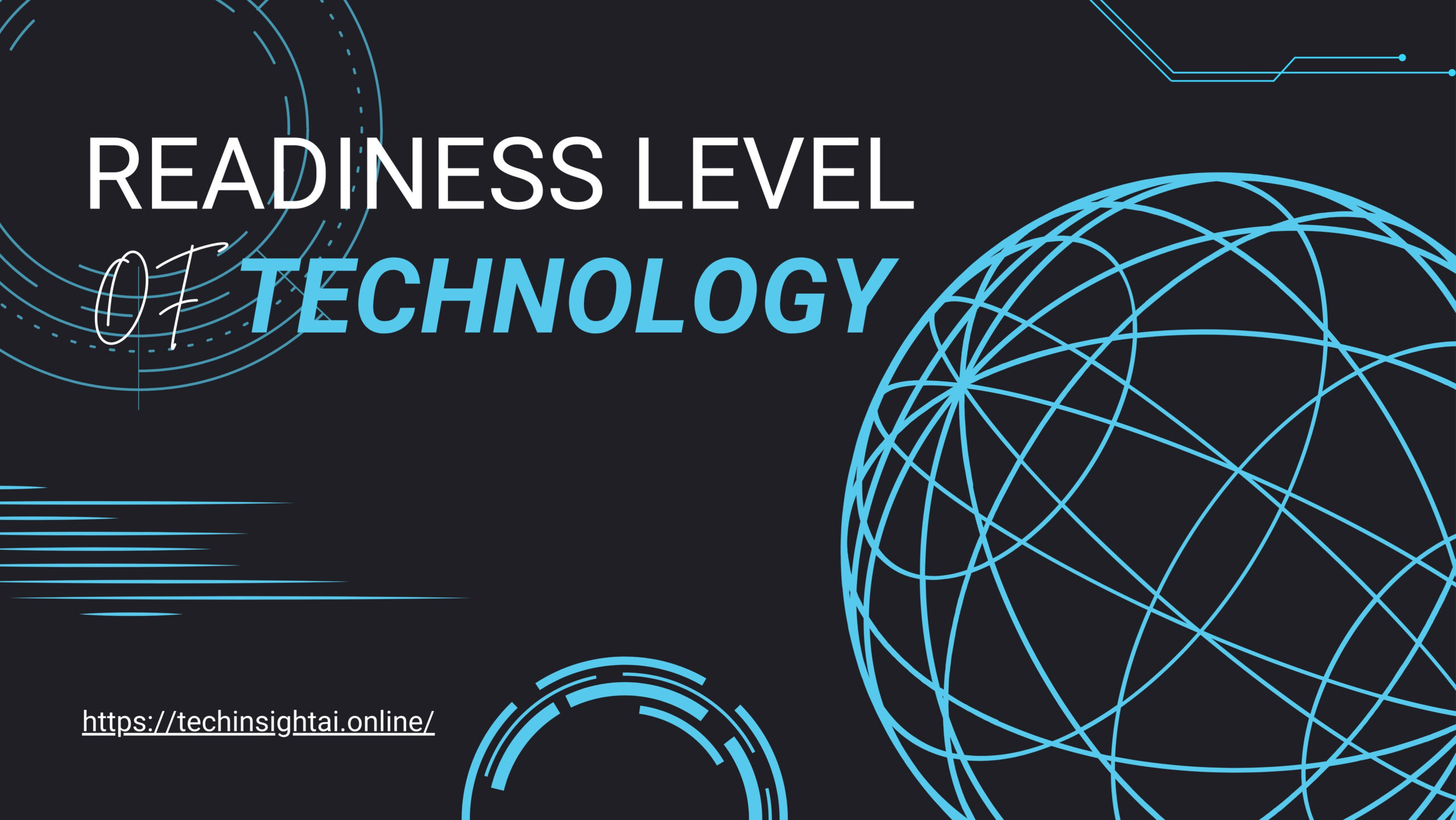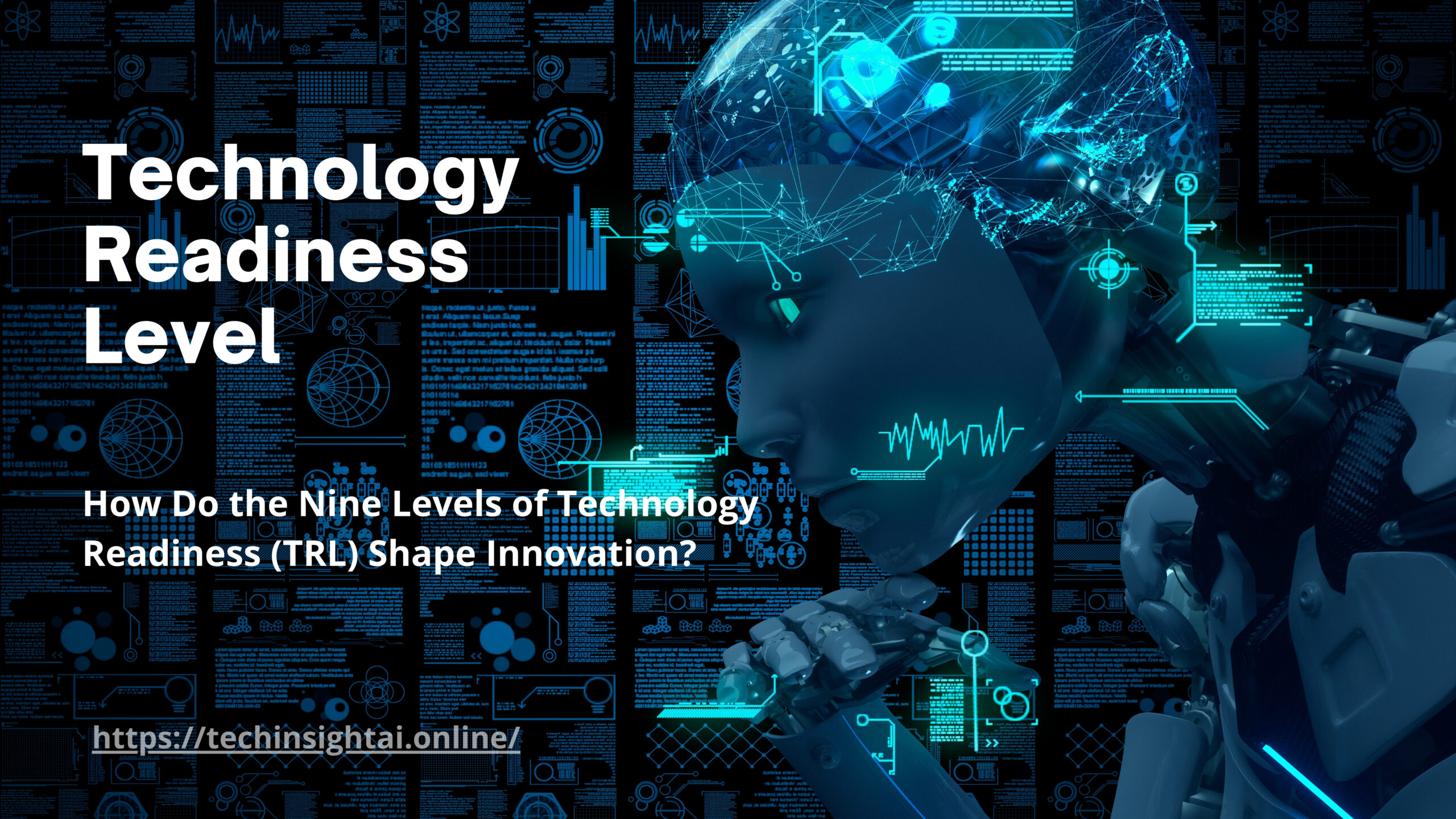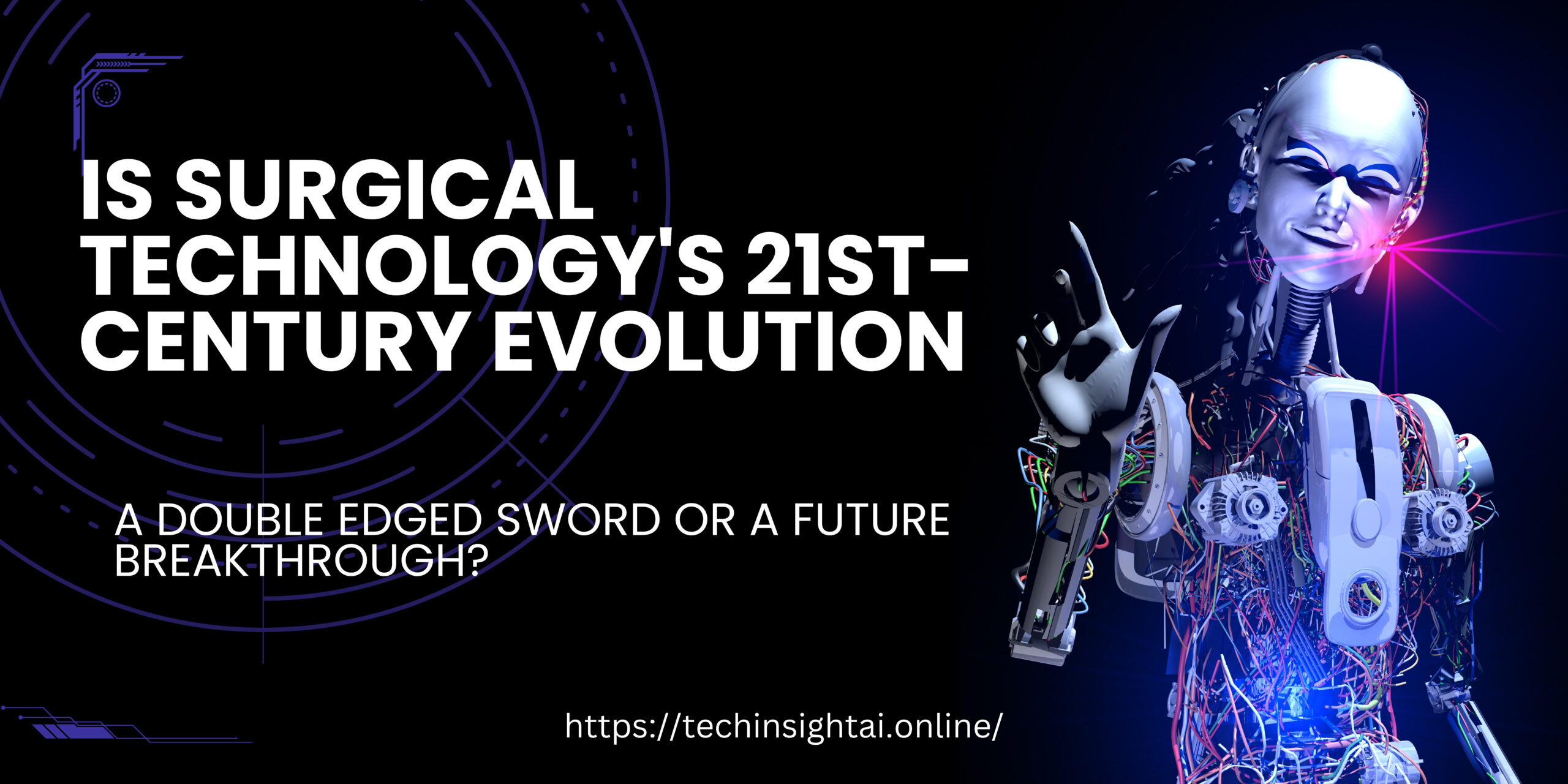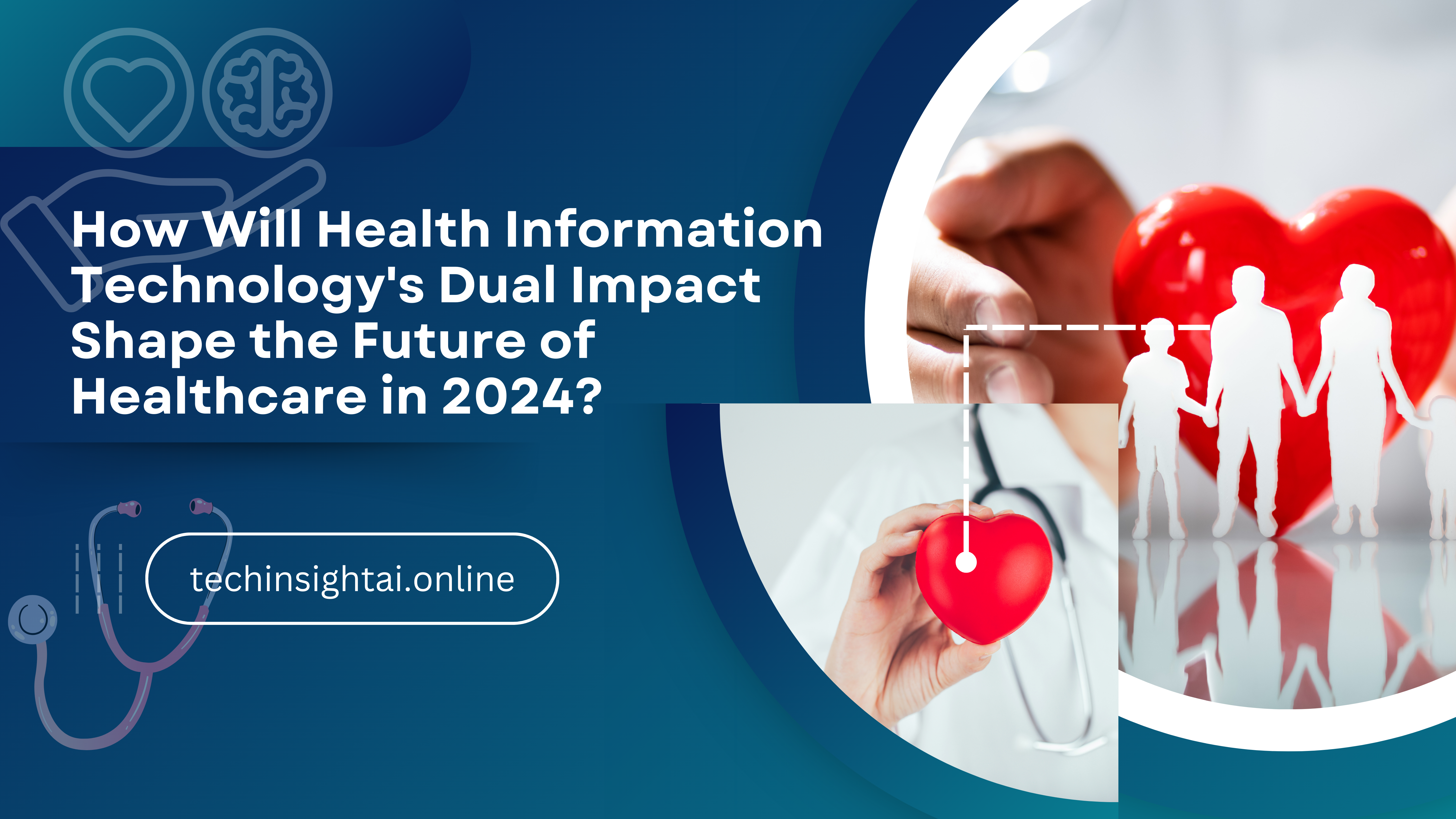Understanding Technology Readiness Level: A Comprehensive Guide
Introduction to Technology Readiness Level
Technology Readiness Level (TRL) is a systematic metric used to assess the adulthood of a particular generation. Developed through NASA in the 1970s,

Technology Readiness Level TRLs offer a common framework to assess one of a kind tiers of technology improvement, from preliminary concept to complete deployment. Understanding Technology Readiness Level TRLs is vital for businesses, researchers, and investors to make informed selections approximately technology development and implementation.
The Nine Levels of Technology Readiness
The Technology Readiness Level scale is split into nine wonderful levels, every representing a extraordinary stage of technological adulthood:
1. TRL 1: Basic Principles Observed and Reported
At this level, clinical studies begins to be translated into carried out research and development (R&D). The cognizance is on essential principles and their preliminary discovery.
2. TRL 2: Technology Concept and/or Application Formulated
Concepts and capability packages are recognized, however there is still a large quantity of hypothesis and no evidence or unique evaluation to aid the assumptions.
3. TRL three: Analytical and Experimental Critical Function and/or Characteristic Proof of Concept
Active R&D is initiated, which include analytical studies and laboratory-based totally experiments to validate the feasibility of the era.
4. TRL 4: Technology Validated in Laboratory Environment
This level entails integrating simple technological components to establish that they may paintings collectively. This validation is normally performed in a controlled laboratory environment.
5. TRL five: Technology Validated in Relevant Environment
The fundamental technological components are incorporated with fairly sensible assisting elements in order that the era can be examined in a simulated operational environment.
6. TRL 6: Technology Demonstrated in Relevant Environment
The generation version or prototype machine is demonstrated in a applicable operational surroundings, reflecting a tremendous step up from TRL five.
7. TRL 7: System Prototype Demonstration in Operational Environment
The prototype is demonstrated in an operational surroundings, with the gadget being close to or on the planned operational gadget and requiring very last engineering exams and evaluations.
8. TRL eight: System Complete and Qualified
At this stage, the technology has been demonstrated to paintings in its very last shape and beneath anticipated operational conditions. This typically involves developmental testing and assessment of the gadget to determine if it meets the preferred specifications.
9. TRL nine: Actual System Proven in Operational Environment
The very last level where the actual software of the generation in its very last form is efficaciously working under real-global situations.
Latest Developments in Technology Readiness Level Assessment
In current years, there have been giant improvements in how Technology Readiness Level TRLs are assessed and utilized throughout various industries. Modern technologies, which includes synthetic intelligence (AI) and device getting to know (ML), are being integrated into the TRL assessment technique to provide greater accurate and real-time reviews.
1. AI-Driven TRL Assessment Tools
AI and ML algorithms are being evolved to research big datasets and expect the readiness of technology extra as it should be. These equipment can identify patterns and developments that won’t be apparent via traditional evaluation methods, presenting deeper insights into generation improvement.
2. Blockchain for Technology Readiness Level TRL Documentation
Blockchain technology is being explored for preserving stable and immutable facts of Technology Readiness Level TRL checks. This guarantees transparency and trustworthiness in the evaluation procedure, as all changes and updates to the TRL popularity of a generation are recorded at the blockchain ledger.
3. Collaborative Platforms
New collaborative platforms are emerging, permitting multiple stakeholders, including builders, buyers, and regulatory our bodies, to take part within the Technology Readiness Level TRL evaluation system. These platforms facilitate higher verbal exchange and coordination, dashing up the era improvement lifecycle.
The Importance of Technology Readiness Level in Innovation
Understanding and utilizing Technology Readiness Levels is essential for several motives:
1. Risk Management
Technology Readiness Level TRLs assist agencies become aware of and mitigate dangers related to generation development. By understanding the adulthood degree of a generation, stakeholders could make informed selections approximately aid allocation and venture timelines.
2. Funding and Investment
Investors and funding groups regularly use TRLs to evaluate the capacity and viability of recent technology. Technologies at higher TRLs are usually taken into consideration lower threat and more likely to be triumphant, making them extra appealing for funding.
3.Regulatory Compliance
Regulatory bodies may additionally require precise TRL assessments earlier than approving new technologies for market entry. Understanding the TRL framework enables agencies navigate regulatory requirements greater successfully.
4. Strategic Planning
TRLs provide a roadmap for era development, supporting businesses plan their R&D activities more strategically. This ensures that sources are centered on advancing technology via the essential ranges to reach full deployment.
Frequently Asked Questions About Technology Readiness Level
Q: What is the primary motive of Technology Readiness Level (TRL)?
A: The number one cause of TRLs is to provide a clean and regular framework for assessing the maturity of a era. This facilitates stakeholders make informed decisions about technology development, investment, and deployment.
Q: How do Technology Readiness Level (TRL’s) gain era developers?
A: TRLs benefit generation developers with the aid of imparting a structured pathway for era improvement. They help identify the present day level of a technology and the stairs had to increase it to higher maturity degrees, making sure green use of resources and higher making plans.
Q: Can Technology Readiness Level (TRL’s) be applied to all sorts of technology?
A: Yes, TRLs may be applied to a huge variety of technology across diverse industries, such as aerospace, protection, healthcare, and facts generation. The framework is flexible and can be tailored to exceptional contexts and requirements.
Q: How do AI and ML beautify Technology Readiness Level (TRL) checks?
A: AI and ML beautify TRL exams by using reading large datasets to discover patterns and developments that might not be evident via traditional strategies. They provide extra accurate and real-time evaluations, helping stakeholders make better decisions.
Q: What role does blockchain play in Technology Readiness Level (TRL) documentation?
A: Blockchain technology offers a secure and immutable record of TRL assessments. It guarantees transparency and trustworthiness inside the assessment method by way of recording all adjustments and updates to the TRL popularity on a blockchain ledger.
Q: How do collaborative platforms improve the Technology Readiness Level (TRL) assessment system?
A: Collaborative systems enhance the TRL assessment technique by way of permitting a couple of stakeholders to take part and communicate efficaciously. This results in better coordination, faster selection-making, and more efficient generation development.
Q: What is the distinction between Technology Readiness Level (TRL) 5 and 6?
A: The distinction among TRL 5 and TRL 6 lies within the checking out surroundings. At TRL five, the technology is confirmed in a relevant surroundings, commonly a simulated operational placing. At TRL 6, the era is established in a applicable operational surroundings, that’s toward actual-world conditions.
Q: Why is Technology Readiness Level (TRL) nine taken into consideration the best degree of adulthood?
A: TRL 9 is considered the highest stage of maturity as it suggests that the technology has been proven to work in its very last form beneath actual-global conditions. This degree involves complete-scale deployment and operational use, demonstrating the technology’s reliability and effectiveness.
Q: How do Technology Readiness Level (TRLs) help in managing assignment dangers?
A: TRLs help in managing mission dangers by means of imparting a clear expertise of the technology’s maturity and identifying potential challenges at each level. This allows businesses to take proactive measures to mitigate dangers and ensure a hit venture of entirety.

Q: Are there any industry-particular adaptations of Technology Readiness Level(TRLs)?
A: Yes, many industries have evolved their very own variations of the TRL framework to deal with specific necessities and demanding situations. For instance, the healthcare enterprise may additionally have extra tiers for medical trials and regulatory approvals.
Q: How do Technology Readiness Level (TRLs) influence funding selections?
A: TRLs impact investment selections via providing a benchmark for evaluating the maturity and potential of technologies. Investors and funding organizations opt to help technologies at higher TRLs, which can be commonly considered decrease hazard and much more likely to be triumphant.
Q: Can Technology Readiness Level (TRLs) be utilized in academic studies?
A: Yes, TRLs can be utilized in instructional research to evaluate the adulthood of new technologies and innovations. They offer a established framework for evaluating research consequences and planning in addition improvement activities.
Q: What is the significance of Technology Readiness Level (TRL) 7?
A: TRL 7 is sizable as it includes the demonstration of a gadget prototype in an operational surroundings. This degree is crucial for validating the generation’s performance and identifying any troubles that want to be addressed earlier than complete-scale deployment.
Q: How do Technology Readiness Level (TRLs) facilitate strategic making plans for groups?
A: TRLs facilitate strategic planning by using presenting a clean roadmap for technology improvement. Organizations can plan their R&D sports more effectively, allocate assets correctly, and set practical desires and timelines primarily based on the TRL framework.
Q: What are the demanding situations related to Technology Readiness Level (TRL) tests?
A: Challenges associated with TRL assessments encompass the subjective nature of a few evaluations, the need for standardized standards throughout distinct industries, and the ability for discrepancies among theoretical and sensible maturity stages. Advanced gear like AI and collaborative systems are assisting to cope with these demanding situations.
Conclusion
Technology Readiness Level (TRL) is a vital tool for assessing the maturity of technologies and guiding their development from concept to deployment. With the combination of modern technologies which include AI, ML, and blockchain, the TRL evaluation procedure is becoming extra accurate, obvious, and green. Understanding and utilizing TRLs is essential for managing risks, securing investment, complying with guidelines, and planning strategic R&D activities. As era continues to conform, the TRL framework will continue to be a cornerstone of innovation and development throughout diverse industries.



Pingback: How Will These 10 IT Information Technology Advancements Shape the Future? - techinsightai.online